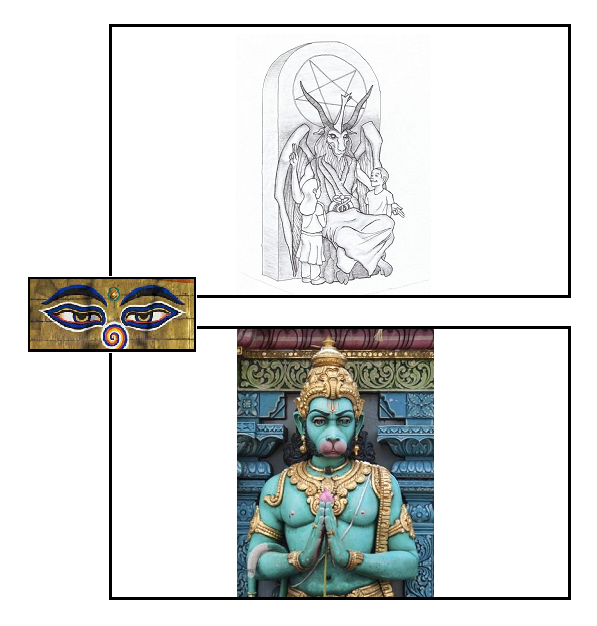[ by Charles Cameron — puzzled, amused, and a little pained by these goings on ]
.
There’s a new-ish monument of the Ten Commandments at the Oklahoma state capitol, and now some Satanists want to erect a statue of their deity, and Oklahoman Hindus are chiming in with their own proposal…
Okay, as far as I’m personally concerned, Satan (above, upper panel) can get behind me — far behind, not right behind, preferably — while I’m happy to have a small statue of a Hindu deity above my desk — although in my case it’s Ganesh rather than Hanuman (above, lower panel), since Ganesh is the patron of writers. But that’s my personal take.
Oklahoma, however…
Let me put it this way. I suspect the Satanists are mostly drawn by the thrill of doing something the French have a handy phrase for: épater le bourgeois — literally shock the bourgeois, or more colloquially, blow their tiny minds…
To be honest with you, I think that’s not a bad motto for poets and artists in their teens and twenties, Rimbaud, even Baudelaire… but being shocking at my age, even if you’re a poet, gets frankly tedious, and trying to build or conserve a civiliation on that basis — more than a little ridiculous.
Those who have a devotion to Hanuman, on the other hand, are simply members of one world culture among many in this grand American experiment.
So let me put it this way: putting up a monument that proclaims “Thou shalt have no other Gods before me” — in a nation proudly founded on the principle of freedom of religion — really does offer the épateurs a hyper-juicy opportunity to do some blowing of minds — though just whose minds are “tiny” here is not a discussion I choose to enter.
And Hanuman, Lord Rama‘s friend? Well, if there’s a freedom of religion issue, all parties have a right to their beliefs…
**
One of the reasons some religions ban religious imagery is because so many of us mistake the image for the deity it’s supposed to represent. And contrariwise, one of the reasons some religions treasure their religious imagery is because so many of us are reminded of the deity it represents. So you’ll often find both iconoclasts and iconodules, puritans and poets, the via negativa and the via positiva — the great cathedrals and the dissolution of the monasteries, the Bamiyan Buddhas and the Taliban.
Laws have a difficult time coming to terms with paradoxes of this nature.
What’s needed is greater human understanding and consideration. As in the Two Commandment (abridged) version found in Matthew 22. 27-29.
But please don’t make a monument out of that…



